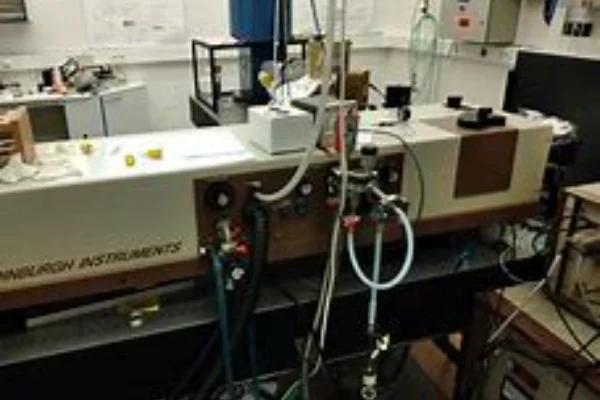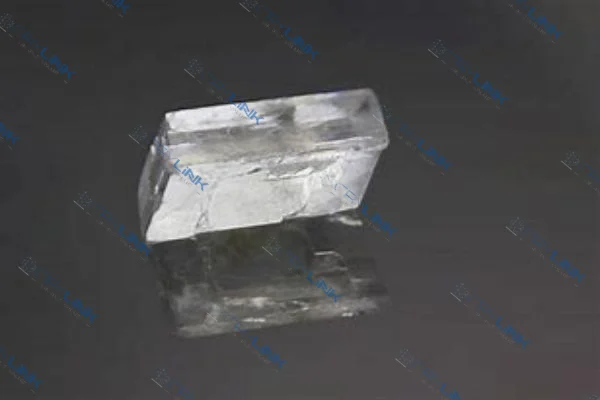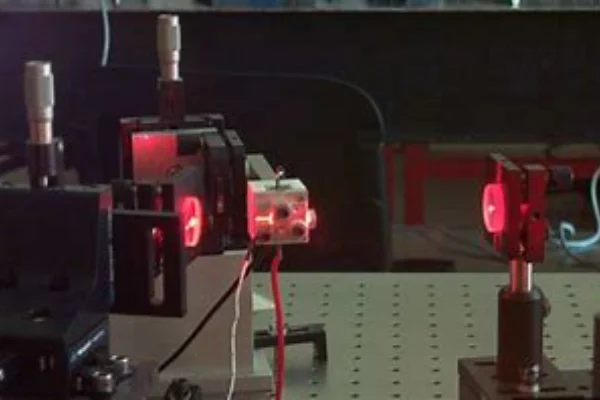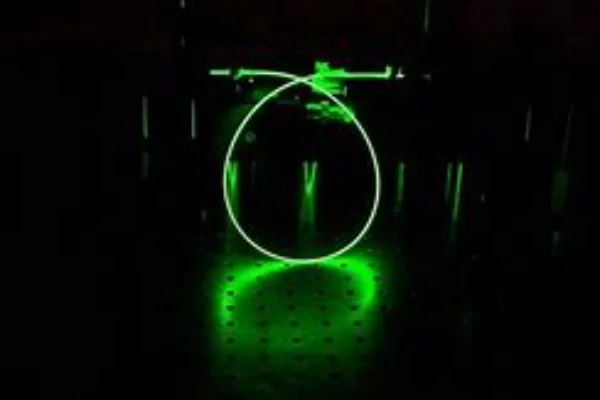Introduction
Solid-state lasers are the backbone of many modern technologies. With the advancement of optical technology, tunable solid-state lasers are now able to span a wide spectral range. From the deep ultraviolet (UV) to the far-infrared (IR), these lasers are revolutionizing industries and research fields.

The Allure of Broad Spectral Range Lasers
The evolution of tunable lasers, spanning a broad spectral range, is undeniably akin to the multiplicity of tools found in a Swiss Army knife. This analogy speaks to their immense versatility in the optical domain. Their vast tuning capability, covering wavelengths from the deep ultraviolet to the far-infrared, earmarks them as indispensable assets across a plethora of industries.
Delving into the realm of spectroscopy, these lasers showcase their prowess. With the capacity to adjust wavelengths on-the-fly, they become the cornerstone for intricate analyses. Materials, be they organic or inorganic, and even intricate biological systems, can be meticulously examined. By employing tunable lasers, researchers have a precision tool that aids them in demystifying the enigmatic world of atomic and molecular structures. These detailed insights pave the way for new discoveries and innovations, some of which redefine our understanding of the very world around us.
Shifting our focus to metrology, the science of measurements finds a reliable companion in tunable lasers. The domain demands nothing short of perfection, as even the minutest of inaccuracies can result in significant ramifications. Here, the broad spectral range of tunable lasers becomes an asset, providing the ability to fine-tune measurements with unparalleled precision. Whether it’s gauging vast cosmic distances or assessing the nanoscale thickness of semiconductor chips, these lasers are up to the task, ensuring measurements that are both accurate and reliable.
Further, the academic and industrial research sectors find an ally in tunable lasers. Their inherent flexibility is a boon for researchers, be it for probing atomic and subatomic interactions, testing novel hypotheses, or paving the way for innovative materials and applications. The lasers’ broad spectrum ensures that they cater to diverse research requirements, whether it’s understanding quantum phenomena or driving advancements in renewable energy sources.
In essence, the broad spectral range of tunable lasers isn’t just an advancement in optics; it’s a revolution, transforming multiple industries and catalyzing groundbreaking research.

Crucial Components: Achieving the Tunability
The marvels of tunable lasers, remarkable in their adaptability across a vast spectral range, owe their prowess to a symphony of materials and components working in tandem. These components are not just peripheral additions but the very essence of the laser’s adaptability.
At the core of this technology lies the exquisite potassium titanyl phosphate, commonly known as KTP. This nonlinear optical crystal doesn’t just play a role; it dominates the performance arena. KTP stands out not just for its intrinsic properties, but for its pivotal role in frequency doubling of solid-state lasers. Imagine the force and intensity of a laser beam.
Now, consider that KTP can withstand this intensity, thanks to its high damage threshold. Furthermore, its ability to remain transparent across a broad range, from the deep UV to near-IR, speaks volumes about its unmatched versatility in facilitating tunable laser operations.
Then, we have the intricate dance of the Optical Parametric Oscillators or OPOs. At their essence, they might seem simple, acting as a bridge between the initial and resultant beams. However, their role is far from simplistic. By leveraging nonlinear crystals, OPOs masterfully split a single pump beam, almost like alchemy, giving birth to two distinct beams. This act of division isn’t random but is a calculated process that allows for an extensive spectrum of wavelengths, bridging the ultraviolet to the infrared realms.
Rounding off this trio are the Raman Shifters, named after the Raman scattering principle. Delve deeper into their functioning, and you’ll witness a mesmerizing interaction. As photons, the elementary particles of light, engage with a medium, there’s a subtle yet significant shift in their energy. This isn’t a universal shift but is tailored to the medium’s characteristics. The outcome? A tunable laser source, adaptable and versatile, spanning across an impressively broad spectrum.
In a nutshell, the grandeur of tunable laser, impressive as they are in their spectral range, is an ode to the brilliance of KTP crystals, OPOs, and Raman Shifters.

Applications Galore: The Versatility of Broadly Tunable Laser
In the fascinating realm of optics and photonics, broadly tunable lasers emerge as the unsung heroes, knitting a tapestry of applications that touch almost every facet of our existence. Their adaptability, allowing them to span a vast spectral range, isn’t just a technical feature; it’s the heart of their versatility, facilitating their integration into diverse sectors. While their prowess in spectroscopy, metrology, and research has been well-documented, the story of these lasers doesn’t end there. Their influence weaves into more intricate, everyday narratives that are worth exploring.
In the labyrinth of medical diagnostics, speed, accuracy, and clarity are paramount. Every second counts, and every detail, no matter how minute, can be the deciding factor in a patient’s prognosis. Here, tunable lasers prove their mettle. Their unique ability to penetrate tissues at varied depths translates into unparalleled imaging clarity.
Whether it’s mapping the complex network of capillaries in the human retina or identifying subtle changes in soft tissues, these lasers illuminate areas that were once hidden in shadow. As doctors and researchers grapple with an ever-evolving array of medical challenges, from the mysteries of neurodegenerative diseases to the complexities of cancer, the clarity offered by tunable lasers becomes invaluable. Enhanced imaging means early detection, and early detection often spells the difference between recovery and relapse. Thus, these lasers aren’t just tools; they’re lifelines in the world of healthcare.
Telecommunications, the backbone of our digital age, thrives on speed and efficiency. As billions of bytes of data crisscross the globe every second, the need for rapid, efficient, and error-free data transmission has never been more pressing. Enter the realm of tunable lasers, and one finds them acting as the diligent custodians of this data deluge. The digital conversations, from a simple text message to intricate video conferencing, often hinge on the ability to tune lasers to precise wavelengths. With the increasing demand for higher bandwidths and faster internet speeds, the role of tunable lasers becomes even more critical. They serve as the arteries of the digital world, ensuring that data flows smoothly, with minimal latency and maximum efficiency.
Our interaction with the environment, especially in today’s age of climate awareness, is underpinned by a deep need for understanding and preservation. Environmental monitoring, therefore, isn’t just a scientific endeavor; it’s a commitment to our planet’s future. Tunable lasers step into this narrative with a promise of precision. Monitoring the air we breathe, especially in urban environments laden with pollutants, demands tools that can detect and quantify even trace amounts of harmful substances. Tunable lasers, with their broad spectrum, rise to the occasion. From detecting minute quantities of greenhouse gases to identifying volatile organic compounds, these lasers provide insights that are both deep and wide. Their data aids policymakers, environmentalists, and industries alike, guiding them towards sustainable practices and choices.
In summary, the story of broadly tunable lasers isn’t confined to laboratories and research papers. It’s a narrative that entwines with our daily lives, from the phone calls we make, the medical diagnoses we rely on, to the very air we breathe. As technology continues to evolve, the role and influence of these lasers are poised to expand, solidifying their position as indispensable tools in shaping our present and future.

Looking Ahead: The Future of Broadly Tunable Solid-State
The progression in the field of solid-state lasers is relentless. As researchers find new materials and refine existing technologies, the spectral range and efficiency of these lasers will only improve. Their versatility ensures they will remain at the forefront of technological advancements.

Conclusion
From the deep UV to the far IR, the realm of tunable solid-state lasers is vast and awe-inspiring. With components like KTP crystals, OPOs, and Raman shifters playing pivotal roles, these lasers are set to transform various industries. Their broad spectrum is not just a testament to human ingenuity but a beacon for future advancements.
FAQs
- What are the primary industries benefiting from tunable solid-state lasers?
The primary sectors include spectroscopy, metrology, research, medical diagnostics, telecommunications, and environmental monitoring. - Why is KTP considered an essential component in these lasers?
KTP crystals have a high damage threshold and a broad transparency range, making them ideal for a variety of applications from the UV to near-IR spectrum. - How do OPOs help in achieving tunability?
OPOs split a pump beam into two new beams using non-linear crystals, allowing for a wide range of tunable wavelengths. - In what way do Raman shifters contribute to the broad spectrum of these lasers?
Raman shifters utilize the unique energy shifts from the Raman scattering principle, resulting in a tunable laser source across a wide spectrum. - Can we expect further advancements in the field of tunable solid-state lasers?
Absolutely. As research progresses and new materials are discovered, the efficiency and spectral range of these lasers are set to enhance even more.

Frank
Frank graduated from the University of Shanghai for Science and Technology, majoring in optics. As a technical engineer at Crylink Company, he deeply understands crystal materials and laser components.
Related Video(s) with this Article
Related Product(s) with this Article
Related Application(s) with this Article
